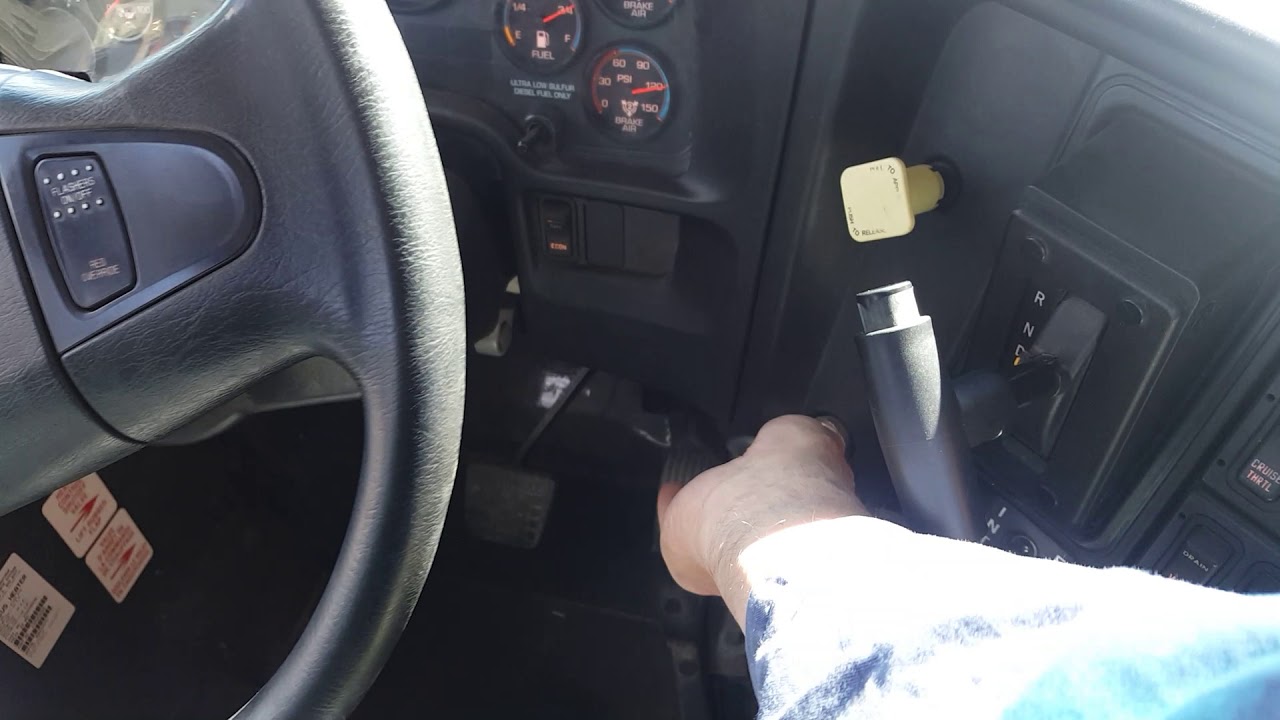As many Mechanics know emission controlled diesel engines need a parked regen once in a while. Most times the engine and MIL amber dash light will come on indicating a fault code to the driver. Both of these amber lights on together most times indicate an emission problem. That is true in this case… the DPF has too much soot build up and is starting to restrict exhaust flow. If you’ve ever heard of someone sticking a banana in a vehicle’s tail pipe causing it not to run well this is the same scenario but soot and ash are the blockage culprits.
The engine temperature is a factor with emissions. Stop and go operation is bad for emissions due to the lack of high temperature exhaust to keep the channels clear. One remedy which works on occasion is to drive the vehicle on the highway for at least 20 minutes. This may get you out of a jam but I’ve experienced this working only as a maintenance procedure and implemented before the diesel particulate filter (DPF) plugs up. On this MaxxForce DT I’m working on the soot load is quite high registering a level 3/3.
On the MaxxForce diesels if there is a large black smoke problem on acceleration you may have a failed DPF. The black exhaust (soot) is normally supposed to be trapped in the DPF and turned in to ash. If the filter breaks apart inside the smoke bypasses filtration and that’s where the ‘snap throttle test’ came from. When stationary hit the throttle hard and check the tail pipe. If there is a lot of black smoke remove the rear flange connection on the DPF and check the filter material. If it’s in pieces start looking for a new DPF.
It’s a shame that we are stuck with this vicious cycle along with thousands of other customers who have to absorb the cost of a regular failure… that being the DPF which has never been re-engineered so it has turned in to a repetitious part changing program. It fails and you replace it with an aftermarket DPF or factory OEM. There is a significant difference in price but I’ve heard that the aftermarket units do not have as much precious metals in it’s construction to accelerate the diesel oxidation catalyst process.
I’m not terribly concerned with that since it’s always about the price when you’re running a fleet. When it’s a thousand dollar difference in cost there’s only one way to go. There are shops with DPF cleaning equipment that will save a lot of money only if the DPF is intact and not restricted. If the cleaning and testing fails we still have to pay the cleaning bill but it’s well worth taking a chance.
Thankfully around 90 percent of our Mercedes diesel engine filters pass the cleaning test but not so great with our Navistar diesel engines. So we have started changing the engine oil much sooner on the MaxxForce diesels to reduce contamination and soot levels. It has made a remarkable difference looking at the oil samples which are now coming back with no bad readings.







